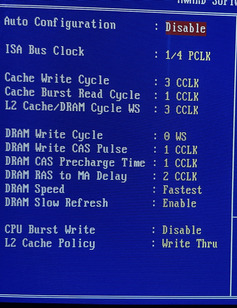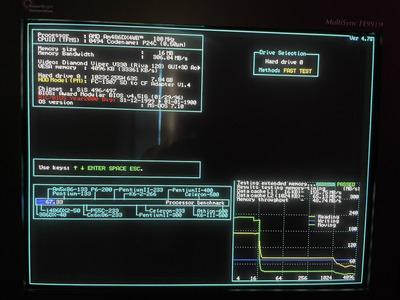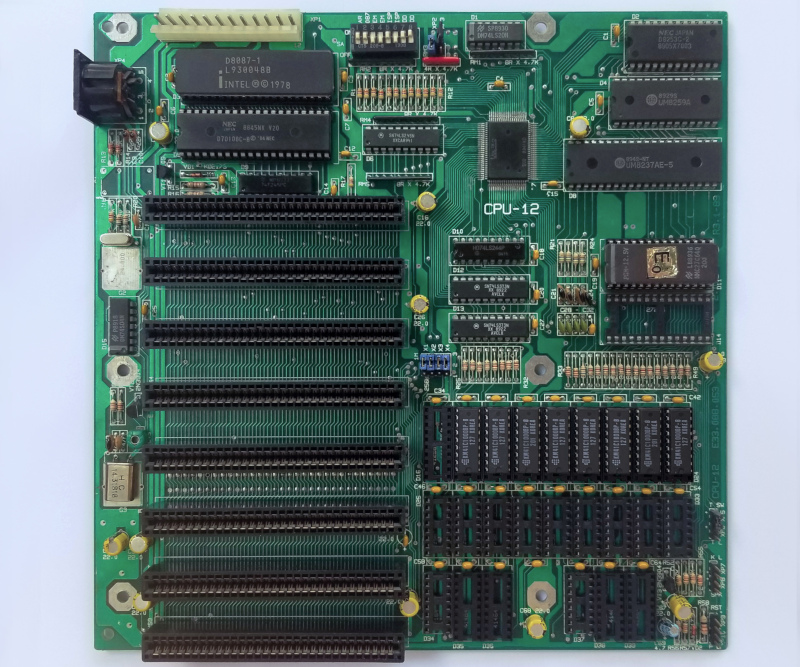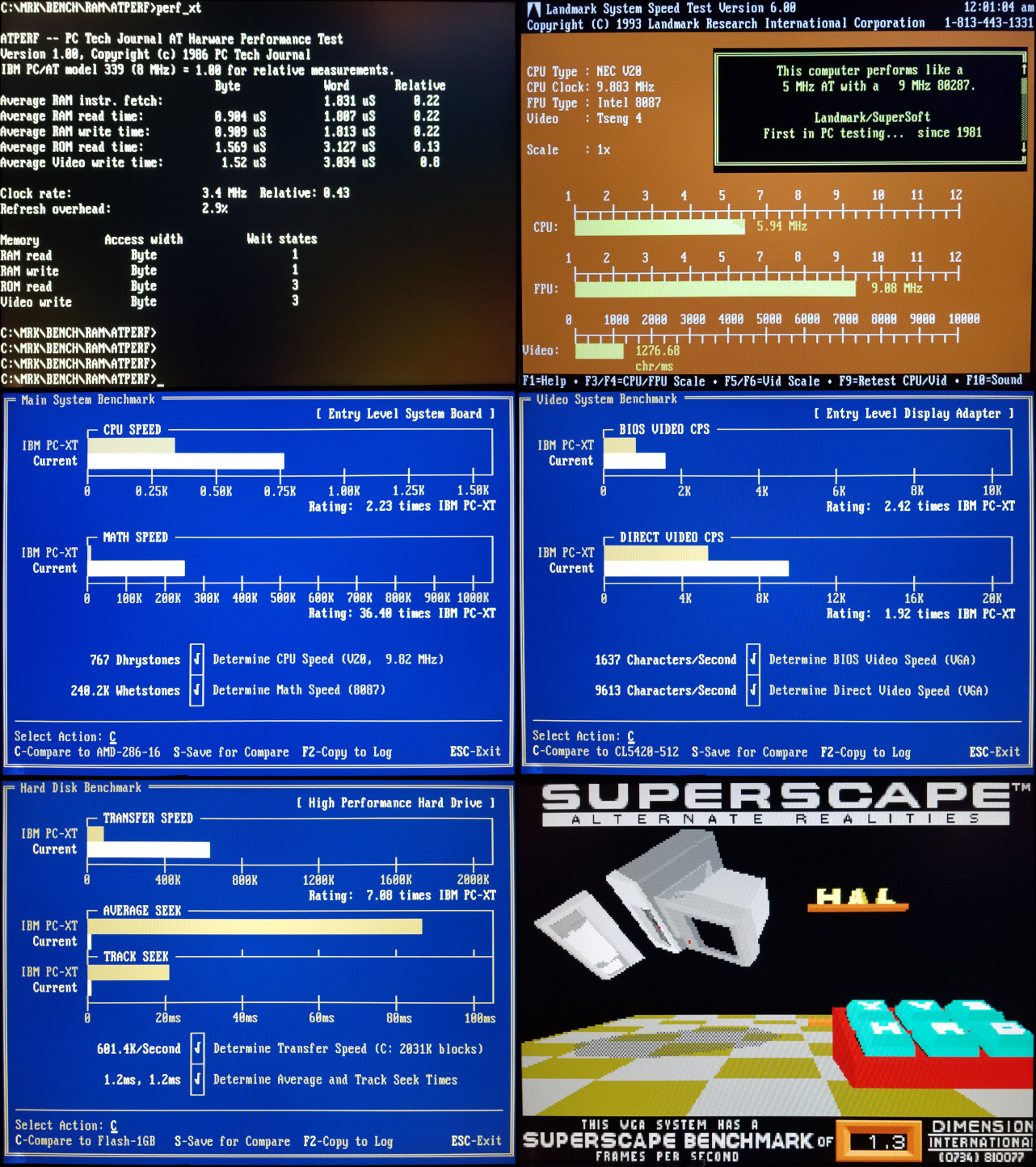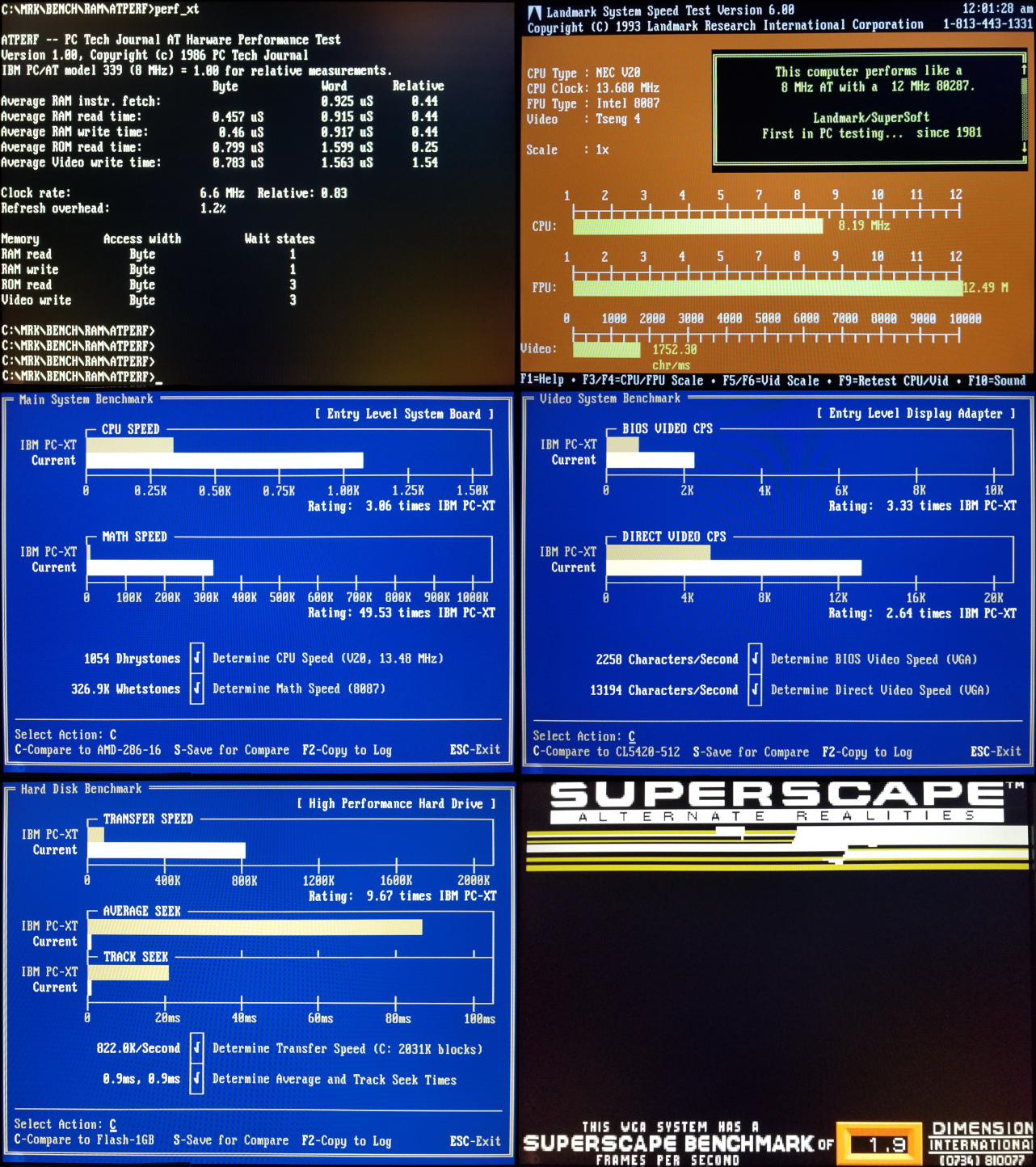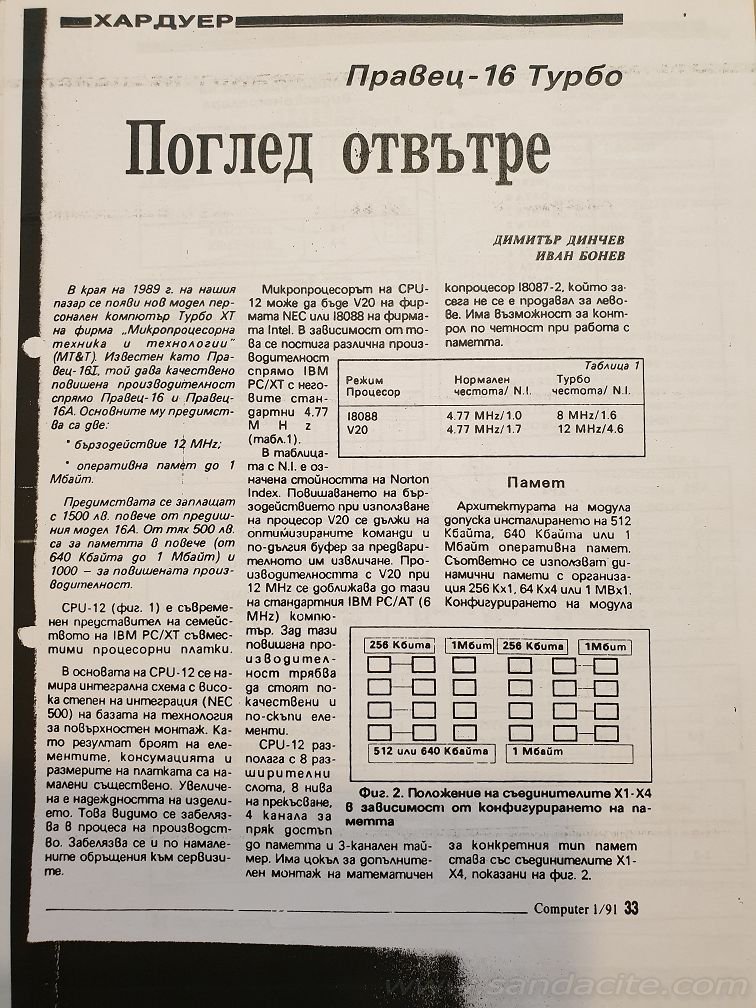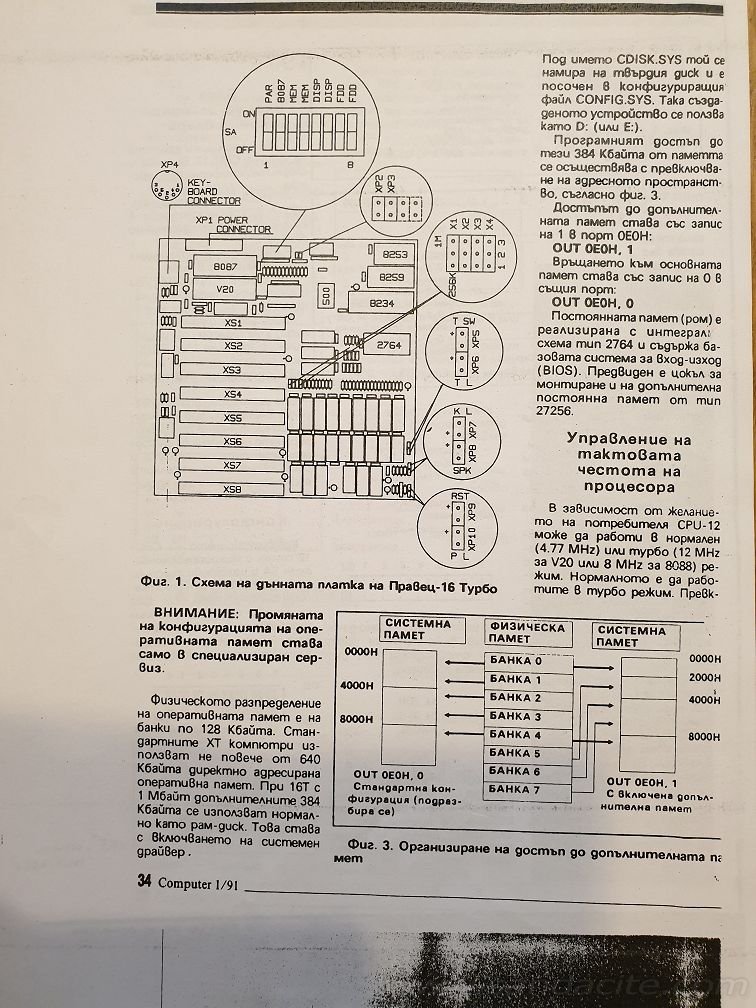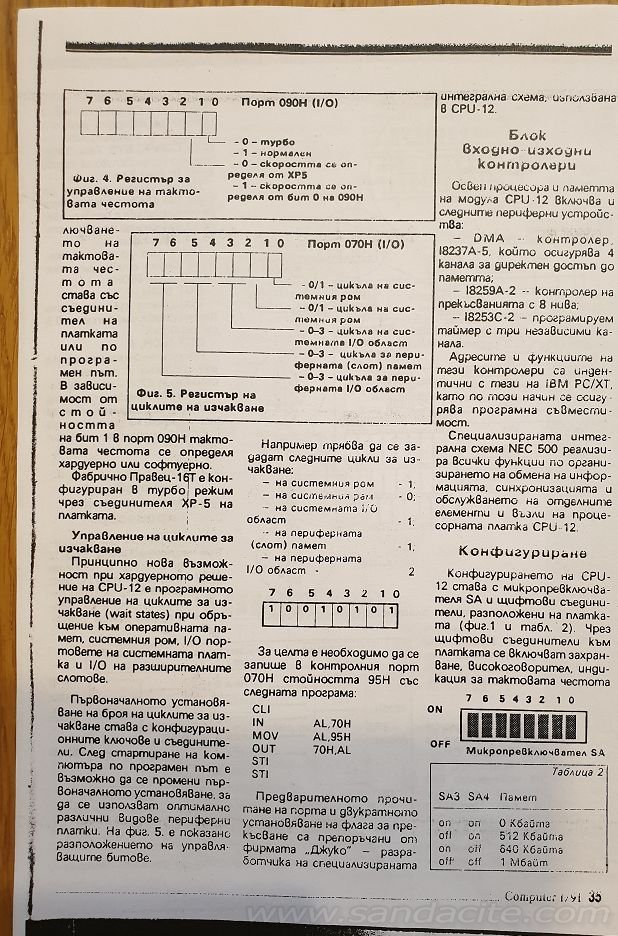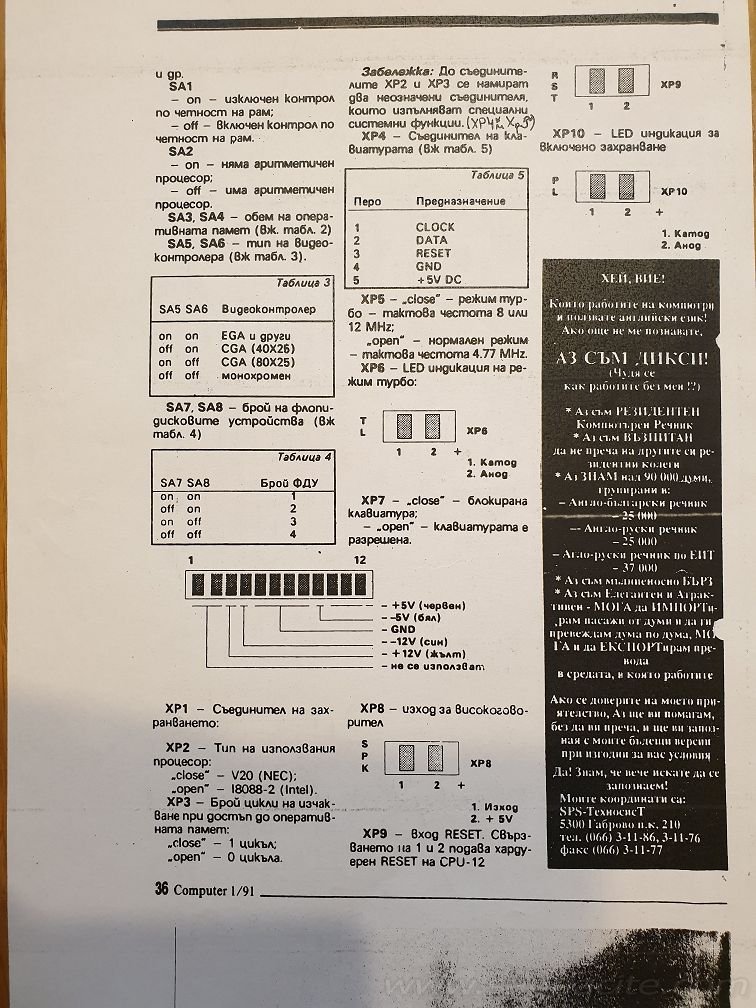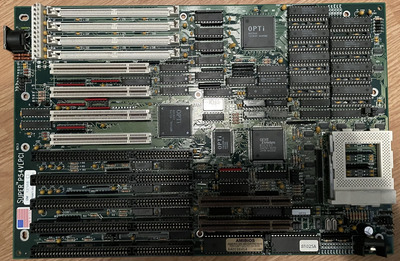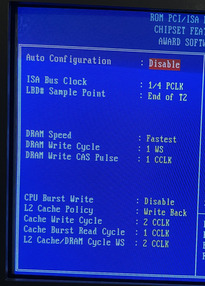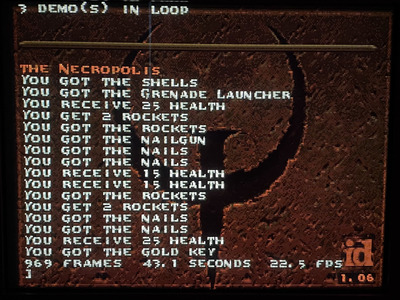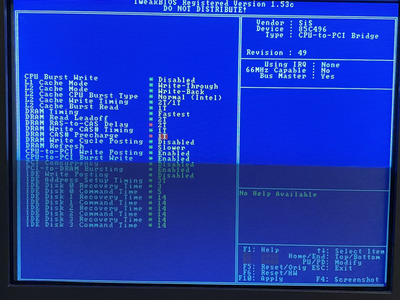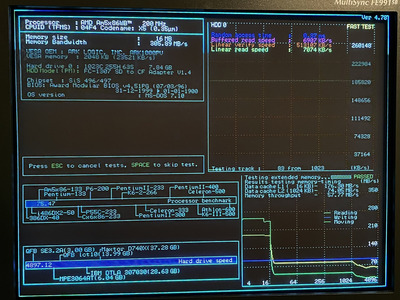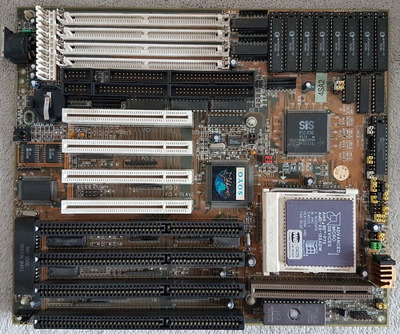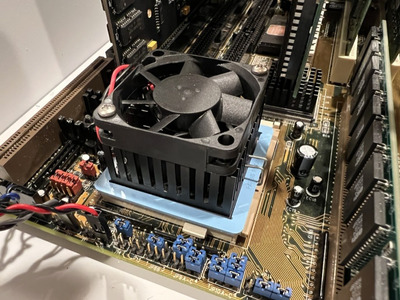@pshipkov
WinTune2 score was added to the main post, but only used ARK1000VL at the moment.
With Am5x86-160: 7963 KPixels/sec (7906 KPixels/sec @ POD100)
Really like that wide POD100 post! Interesting stuff. Lots of neat boards I've never seen/heard of.
Kinda wild that some late assemblies like the LS486E Rev. F struggled so.
Seems like a big step down from the Rev. C2 and Rev. D.
Good to know that other boards support the POD with 3v from the onboard VRM.
Perhaps there's something in the POD spec that allows for this?
Interesting stuff, nonetheless.
Going to have to shake, rattle, and roll with this SiS471 board. Really want to see it live.
Will keep you apprised, but have something else in the meanwhile 😁
----
Really liking the XT post here. These Juko boards are very nice. Neat and clean.
Although clock-for-clock not that impressive, it seems to turn up the heat at 13.5MHz. Pretty nice.
SuperScape seems really sensitive with regards to ISA timings and bus clock.
Any clue if ISA is asynch on this board at 4.77MHz, like on the NEST?
Pretty neat to see that these boards were in Bulgarian XT clones.
One thing I'm curious about is swapping that 13.31816MHz oscillator. Those are generally a reference clock, right?
Wouldn't that interfere/interrupt floppy access, and mess with timings on ISA boards w/o such a reference?
That Tandy 1000SL is amazing. Really the high-mark indeed.
---------
@Chadti99
Glad you were able to make some use of the info on TRW! Their site is super useful for this kinda stuff.
Numbers look pretty dang nice for this board! Seems like RAS to CAS 2 helps.
Have you looked at the BIOS at all in ModBin to see about adding any settings re: RAS to CAS?
Regarding the SP3, I am not sure what to think.
That seller has been listing some high dollar value items, but the bidding wars have been intense.
To be fair, eBay has been dry on some things, for some time now, so perhaps that's part of it.
Agreed with @pshipkov on perhaps the Cyrix and SCSI cards plus the inflation aspect.
Cyrix 5x86s command crazy prices, even the 100MHz ones. Not sure why, as those are common-ish.
It's the 120s and 4x models that get real nuts, but there's fewer of those so I can understand that more.
It's funny too, because rare 6x86 parts like the 6x86-P200+ with Cyrix markings tend to sell comparatively for peanuts.
M919 prices are out of hand. I never picked one up, and really don't want to now.
The other thing that's really, really bad has been GUSes of all varieties.
Seems like they're really being overpriced due to a resurgence of hype.
Great cards, but wow. Crazy.
I would not buy one for the cost of a new Z790 board or 13900K or 7950X...
----------
@maxtherabbit
I have some of those 10ns parts and they work as intended, but they are about the same as any other 15ns part on average.
I'd say some real 12ns parts would be "better," but 15ns is generally more than enough for most use cases.
I have noticed some boards are not completely happy with these chips.
Depends on the board though. The one I was testing has the OPTi Python chipset, which is a bit cumbersome as-is.
Could be partly because some of them are only 5v tolerant, 3.3v parts re-marked as 5v parts. But that's my guess.
==========================
Decided to try something new here. Been talking a lot about VLB boards. Tried a few Pentium boards.
Why not smash them together?
The Culprit: SuperMicro's P54VL-PCI
Initial Thoughts: For an early Socket 5 board, dated to mid/late 1994, equipped with the universally infamous OPTi Cobra chipset, this board is positively fascinating. I mean that with all sincerity, and with all the hatred I can muster for the thing, because, for as awesome as it is to mate Pentiums and VLB, it is also completely asinine. Before saying much more, it is imperative to detail some things about the OPTi Cobra chipset itself, as these details are self-evident in this board's design. The OPTi Cobra is a 1992 solution, initially designed for Socket 4 and the Pentium 60/66. The Cobra (596/597)-unlike the earlier 571, meant for Socket 3 and grafted onto the Pentium and Socket 4-was a fully 64-bit solution, providing 64-bit cache and DRAM support, appropriate for the then cutting-edge 64-bit Pentium bus. The chipset provides a full "33MHz asynchronous VESA Local Bus implementation" and further provides for "ISA to Local bus command translation," amongst a whole host of other features found on "tamer" Pentium setups like the SiS50x and Intel 430LX, like PCI. Speaking of such, it provides PCI 2.0 support via the OPTi 82C822 bridge chip, sometimes seen in conjunction with more primitive 486 chipsets like the OPTi 895 and OPTi 802. One problem with the 82C822 is that it works in the reverse of what logic would dictate, at least in the case of this board. Given that it works on a 486, you can probably see where what I am about to say makes logical sense but also paradoxically makes little sense: VLB is the primary bus, and PCI is bridged to VLB as a second-class citizen, providing terrible PCI performance. Surprisingly, however, compatibility is quite good amongst a whole host of PCI cards, and while performance is bad, it's not that bad. To be frank, even the 430NX had PCI bugs (but, to be fair, it was miles better than this). The chipset itself provides for support for up to 2MB of Write Back L2 cache, but only 512k is supported on this board. In fact, to achieve 512k on this-and most other-Cobra boards, you need an astounding 17 32kx8 chips (1 TAG) and 1 16kx1 TAG. Excessive? Maybe. Cool? For sure. 😄
Onto the board itself. I bought this particular beast a few years ago. It is extremely basic and fairly rudimentary. I've upgraded it to 512k L2, and swapped in a Pentium OverDrive MMX 166, as the board can only-and I mean only-run a Pentium 90 or Pentium 100. The 1.5x multiplier is hardwired and can be modded, but for the sake of keeping things authentic, I went with the OverDrive. Another interesting note is that this board uses the "wrong chipset," in that it has an OPTi 546/597. The 546 is the first chip in the OPTi Python from 1993; it is likely that the 596 and 546 are identical/near-identical, as the numerous BIOSes for this board work with other variants of this board that have the "proper" 596 chip. The first signs of trouble, however, came when I could not get this board going with a WinChip or WinChip2, while I could do so with a board based on the 1993 OPTi Python VL Pentium chipset. I figured it had to be BIOS related, as the stock AMI WinBIOS is very slow and really lacks in performance even with things cranked to the max. I had dreams of finding the appropriate MR-BIOS for the OPTi596/597, so as to be able to run other chips on this board. User @jheronimus was provided a copy of a MR-BIOS for the Octek Bison III for the MR-BIOS archive here on the forum, and I used said BIOS on this board. It works GREAT.
Some brief comparisons led me to switching out the AMI BIOS, and I will share a few numbers here:
ARK1000VL, all timings tightest:
Superscape: ~45 fps
PC Player: ~22 fps
I stopped, dropped the AMI BIOS, and threw in the MR-BIOS. Wow. What a difference. The POD MMX 166 worked!
BIOS settings were as follows:
- MR-BIOS (massive perf uplift) - 586VHP
- 512k L2 cache comprised of 17 32kx8 + 1 16kx1
- Memory: 0ws Read/Write
- Hidden Refresh Enabled
- SRAM Read 4-2-2-2
- SRAM Write 5-2-2-2
- Write Back L1 and L2
- VL-Bus Ready (LRDY) 0ws
Tested Peripheral Hardware:
- Promise EIDE2300+ v3
- 2GB Verbatim CF card (used in all previous tests)
- A few VL/PCI cards, shown below
- 32MB 60ns FPM RAM (board does not take EDO)
A note: Using tighter SRAM timings is possible, but provided no tangible performance benefit and led to crashes in Superscape and DOOM. These timings provided the same results, without crashes.
Could not get 3D Studio R3 going...
I tried everything: lowering timings all the way, the AMI WinBIOS, and nada. No dice.
This is not surprising, as this chipset is not the most friendly and has been known to be quirky with certain software.
Think it's something with the VLB implementation, but just speculating based on things I see from user @Gona's website (scroll to the bottom for details).
Seems like these boards are just not quite 100% amicable when it comes to playing nice with certain software.
Seems like certain VLB cards won't even boot!
Testing with a POD MMX166 yielded the following results:



Thoughts:
PCI performance is clearly lacking.
Trio64 for Trio64, we see VLB is the way to go. This makes sense, given the design of this board.
VLB performance, however, is not bad. EIDE performance is decent.
Slower than on a 486/native-implementation, but not too bad.
We see a ~25% deficit there, compared with the OPTi895.
The CPU performance is okay.
The Pentium MMX 166 is kneecapped by this antiquated chipset and setup, but still fast enough.
Memory throughput is not "486" levels of "bad," but definitely not on par with earlier Pentium solutions.
It's more on par with VIA Apollo or ALi Aladdin I, which is not good, but not as bad as the 571 would have been.
Wolf3D numbers are subpar on PCI, mediocre on VLB. Superscape is more of the same.
Quake shines, however, but not quite to the level you'd think. Still 31.2 fps on an ARK1000VL is pretty solid 😀
DOOM is interesting. Mode X performance seems to tank heavily on the bridged PCI.
Curious to see if FastDOOM shows as much of a dropoff.
WinTune2 is more of the same. Good on VL, bad on PCI.
VLB compatibility is weird. ATi Mach64 did not want to start. No lights.
Moral of the story:
This board is a Frankenstein's monster of compatibility, but still has compatibility quirks.
It is not good for speed. It's not too slow with the right BIOS, but it won't get you anywhere real quick.
Definitely a squirrely one, but a fun one at that! 😀
Pentiums and VLB are not a match made in Heaven.
Although 30.2 fps in Quake on an ARK1000VL is worth it. (Barely beats a POD100 on Socket 3 hardware! 🤣)
